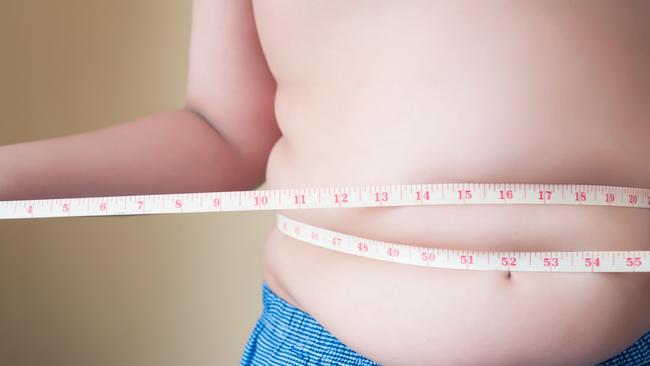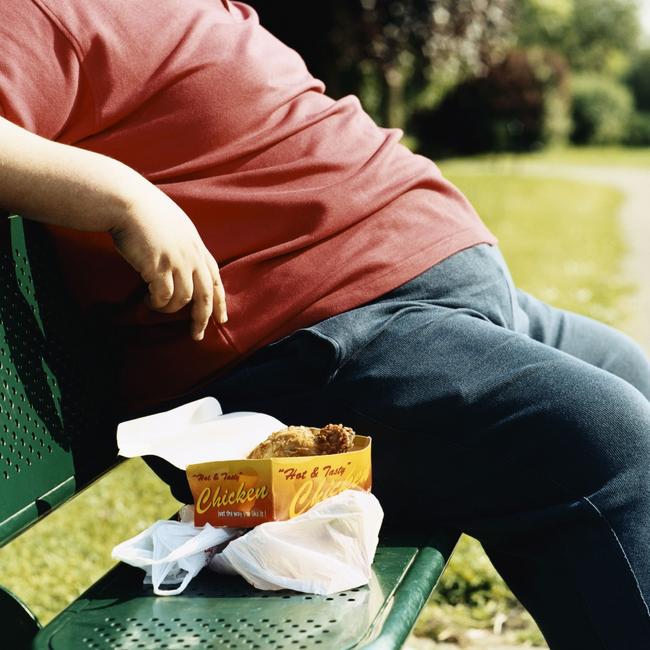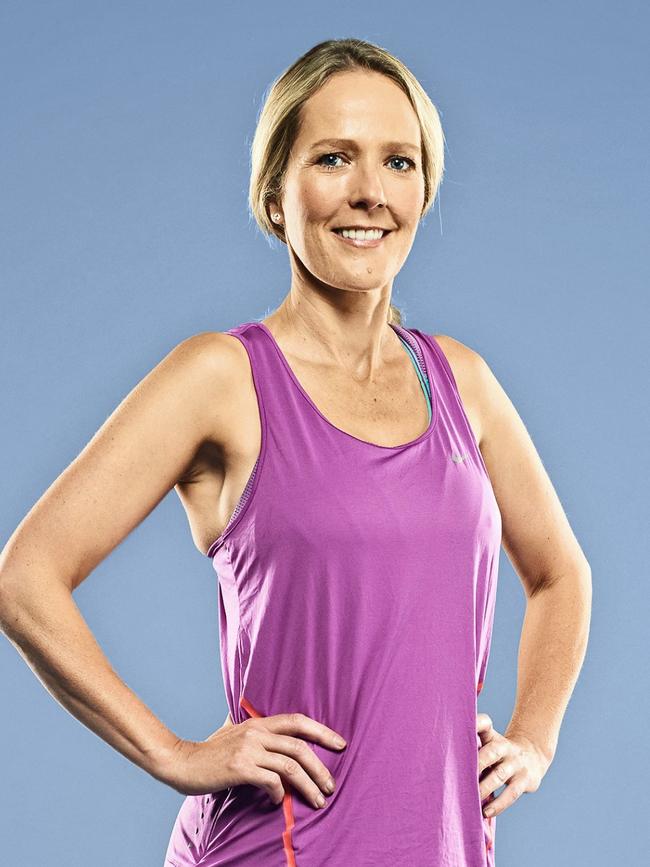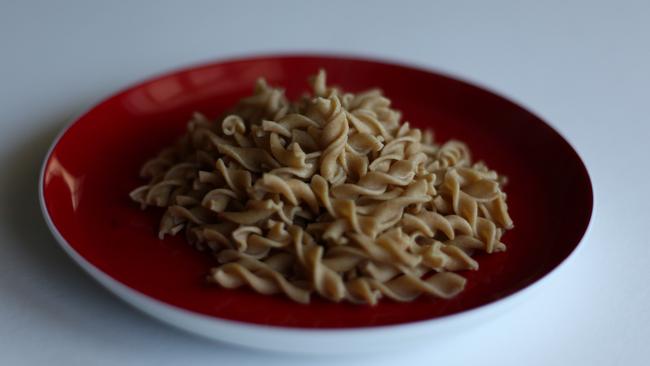Shrink your waist in five weeks – pasta and wine allowed
Over-45s carrying too much weight around their middles get some advice on how to lose it.

Britons are ballooning. Our waistlines are expanding at a rate that means the average adult is now rounder than ever before. Two in three people are classified as obese, with the latest NHS figures released showing that adults weigh a stone (6.4kg) more on average than they did 30 years ago.
By middle age, the average man weighs 14st (89kg) and has a 40in (102cm) waist while women weigh in at an average 12st (76kg) with a 36in (91cm) waistline.
The consequences for our health are far-reaching. These latest statistics reveal that many adults are at risk of obesity-related problems – the NHS states that a middle measuring 37in (94cm) or more in men and 31in (79cm) or more in women equates to a higher risk of heart and circulatory diseases.

Last week researchers from the UCL Centre for Longitudinal Studies and the University of Oxford published findings in the Journals of Gerontology which revealed that while baby boomers born in the 1940s and 1950s are living longer, they are not living healthier lives.
Laura Gimeno, a researcher in healthy ageing at UCL and lead author of the paper, warns that people risk entering their fifties and sixties with serious health problems including cancer, lung disease, heart problems, diabetes and high cholesterol. “We find that there is a ‘generational health drift’, whereby younger generations tend to have worse health than previous generations at the same age,” Gimeno says.
There are multiple reasons that trousers get tighter and belts need loosening as we age. From our forties onwards most of us sit more and move less but that is only part of the overall picture. Fluctuating hormone levels, stress, poor diet habits and a loss of muscle mass can all lead to a thickening waist.
“Men generally have a greater propensity for carrying fat around their middle but this increases with muscle loss, or sarcopenia, in the forties and fifties,” says Dr Linia Patel, a researcher in the department of clinical sciences and community health at the Universita degli Studi di Milano in Italy and a spokeswoman for the British Dietetic Association.
Keeping extra kilos at bay can feel like a losing battle but the top trainer and Times fitness expert Harry Jameson says it is possible to blast belly fat and lose centimetres from your waistline in five to six weeks.
According to the NHS and the British Nutrition Foundation, a weight loss of 0.5-1kg a week is generally considered to be a healthy rate and achievable through changing diet and exercise habits. By losing this amount each week you can expect to shrink your waistline by an inch in about five weeks.

“Everyone has a different metabolism and losses can be quicker or slower for some people,” Patel says. Generally, the more you have to lose, the quicker the waistline inches will melt away.
“What you eat and how active you are both impact levels of belly fat,” Jameson says. “Last month a study at the University of Michigan reported that overweight people who are long-time exercisers have healthier belly fat tissue than overweight non-exercisers, because it’s stored just beneath the skin rather than around the organs. So good habits can make a real difference.” Here’s how to lose an inch off your waistline.
1. Forget BMI, try BRI (Body Roundness Index)
Scales and BMI (body mass index) measurements don’t tell you anything about the relative amount of fat around your middle. Medical experts are moving towards a new measurement called the Body Roundness Index as a more accurate measure of the health of your waistline and hidden body fat than the BMI.
A recent report in JAMA Network Open journal showed it to be accurate for estimating body fatness that puts you at risk of disease. To calculate your BRI, measure your height, waist circumference and hip circumference, then enter the results into an online BRI calculator such as webfce.com/bri-calculator. You are looking for a BRI score of 2.5 or less, which shows you have a healthy shape and lower levels of hidden belly fat.
Measuring your waist circumference is also a really useful guide but you do need to make sure you measure in exactly the same place every time so that readings are consistent, Patel says.
“A larger waist measurement can indicate too much fat inside your organs as well as under the skin,” she says. “And this poses a risk to your health.” If your waist measurement is greater than half your height, it suggests you are carrying too much fat around your middle.

2. No need to cut all carbs
Cutting out highly processed and sugary carbs will help to shrink your waistline but not all carbs are bad and you can keep some pasta, bread and potatoes on the menu. Wholemeal versions of bread and pasta and potatoes with skins left on are good choices because they provide extra fibre, which is beneficial for increasing satiety and has a positive impact on gut health and visceral fat.
However, when nutritionists at the University of Minnesota analysed 38 published studies on pasta intake for a study in the journal Nutrients they found no evidence that the amount of even white pasta consumed was linked to people being more overweight or having a larger than average waist circumference.
Pasta, they said, “has a unique, compact structure that causes the carbohydrates to digest slowly in the body giving a lower glycaemic response” – and that can help to keep your waistline in check.
“The reality is that low-carb diets help some people to lose weight but are not for everyone,” Patel says. “You can enjoy some carbs as part of a healthy diet.”
3. Cut out ultra-processed foods
Ready meals and packet foods with long lists of unrecognisable ingredients are likely to be playing havoc with your waistline. Researchers reporting in Public Health Nutrition linked consumption of ultra-processed foods (UPFs) with larger gains in fat around the middle, and a study of British adults in PLOS One journal showed that a 10 per cent increase in UPF intake equated to a larger waist circumference by 0.87cm.

4. Eat at least one serving of pulses a day
A review of 21 papers involving 940 men and women published in The American Journal of Clinical Nutrition found that adding a single daily serving of beans – haricot, red kidney and black beans all count – was associated with a lower body weight and smaller waist size after six weeks. And nutritionists at the University of Otago showed that adding two servings (about two tablespoons) of pulses to a balanced diet “resulted in a greater reduction in waist circumference compared with a group consuming a control diet”.
Patel says that pulses are a good source of protein, which has a satiating effect, and contain 5g of fibre in every 100g, which helps to fill us up and prevent hunger pangs. “High-fibre foods such as pulses also take a lot of chewing, which stimulates satiety signals,” she says.
5. Alcohol changes the way your body burns fat – have 2-3 alcohol-free days a week
Alcohol contains what Patel calls “empty calories”, offering few benefits nutrition-wise. “Alcohol also changes the way your body burns fat,” Patel says.
“When you drink, your body is more focused on breaking down alcohol than metabolising any of the other calories you consume, and in turn encourages the excess calories to be stored as visceral belly fat.”
A study of 11,289 normal-weight participants, published in Public Health Nutrition, showed that men and women who consumed more than two alcoholic drinks during each drinking session had higher odds for abdominal obesity compared with those who drank less.
“Aim for two to three alcohol-free days each week and try to stick to one drink on the other days,” Patel says.
6. Get 7-8 hours’ sleep regularly
Getting enough sleep is key to keeping belly fat at bay.
“Being sleep-deprived can ramp up levels of hunger hormones during the day and affect our metabolism in negative ways,” Patel says.
“The important thing for waistlines is that we get enough sleep on a regular basis.” In a study published in PLOS One, participants who slept for six hours or less each night had a waist circumference 1.2in (3cm) bigger than those who slept an average of nine hours.
“Most of us should have a target of seven to eight hours, which has been shown to combat visceral belly fat gain quite significantly if you can get that amount of sleep consistently for six months or longer,” Patel says.
7. Try yoga and t’ai chi to lower the hormones that can cause excess abdominal fat
Even otherwise slim people can harbour abdominal fat in the form of a “stress belly”. Psychologists at Yale University showed that non-overweight young women who are highly stressed are more likely to have excess abdominal fat, although men are also affected.
“Being chronically stressed stimulates the body to produce more cortisol, a key stress hormone,” Patel says.
“Cortisol affects fat distribution by depositing fat centrally around the middle and the organs.”

Stress-reducing activities such as yoga and t’ai chi can help. Researchers at the University of Technology Sydney and the University of Duisburg-Essen in Germany found women with abdominal obesity and an average waist measurement of 34in (86cm) lost an average 1.5in (3.8cm) from their middle by doing two weekly 90-minute classes of traditional hatha yoga for 12 weeks.
8. Reduce your intake of added, and hidden, sugar
Sugar is among the worst things to consume when it comes to belly fat. “Managing your blood sugar levels by keeping your intake of added sugars to a minimum is key to both preventing and managing belly fat,” Patel says. “Avoid sugar in refined foods as much as you can.”
“When we consume too much sugar the excess is converted to fat and stored,” says So Yun Yi, author of a 2020 paper in the European Journal of Preventive Cardiology. “This fat tissue located around the heart and in the abdomen releases chemicals into the body which can be harmful to health.”
A few squares of dark chocolate is OK and should satisfy your sweet cravings without playing havoc with belly fat. Select the 70 per cent cocoa variety and it will usually be lower in sugar (and higher in fibre and nutrients) than milk chocolate.
9. Exercise four times a week
This is the golden target for reducing your waist circumference.
In a recent University of Michigan study published in Nature Metabolism, scientists compared overweight and obese adults who had exercised at least four times a week for an average of 11 years with a group who said they had never exercised regularly but were matched for body fat mass, weight and sex.
The regular exercisers had developed distinct differences in the way fat was stored around their middle. They were less likely to have deeply embedded and dangerous visceral fat around their organs and more likely to store excess fat tissue just beneath the skin as a “healthier” type called “subcutaneous adipose tissue”.
“These sorts of benefits come only with a combination of healthy diet and exercise four times weekly,” Jameson says.
“For any client with waistline issues, this is the target amount of sessions.”

10. Run, walk or cycle slowly for 60 minutes once a week
Aerobic exercise was key to helping overweight people to store belly fat subcutaneously instead of around their organs, the University of Michigan study found, and Jameson says one of your four weekly workouts should be a long, slow, continuous cardio session.
“This can be a brisk walk or a slow jog of at least 60 minutes or a steady cycle of 90 minutes, done in one go, but you will need to build up gradually until you can do that amount, so start with 30-40 minutes,” he says.
“This sort of lower-intensity exercise not only conditions your heart, lungs and large leg muscles, but helps to reduce the stress hormones, such as cortisol, that can accelerate fat gain around the middle and burns calories – which are all winners for the waistline.”
11. Lift weights twice a week
Two of your four weekly workouts should focus on strength training. “Resistance training makes your muscles more efficient calorie burners and that is crucial for blasting fat from your middle,” Jameson says.
“For maximum effect, focus on compound movements that work multiple and large muscle groups of the body,” such as those in the panel, right.
Targeting exercises for your core and oblique muscles at the side of the waist won’t have the same waist-whittling impact if you have inches to lose from the area, so should be an added extra, Jameson says.
In a study at Harvard University, men who did 20 minutes of daily weight training had less of an increase in age-related abdominal fat compared with men who spent the same amount of time doing only aerobic exercise.
“Strength training works for women too and twice a week is enough to be effective,” Jameson says. “Start by doing exercises using just your body weight before adding dumbbells or kettlebells.”

12. Make one weekly workout a HIIT session
Pushing yourself out of your comfort zone once a week is another key belly-blasting workout. HIIT (high-intensity interval training), which includes short bursts of intense effort followed by brief rest periods (think 40 seconds on, 20 seconds off), can take as little as 15 minutes to complete, and a 2020 study in Sports Medicine journal showed that this type of exercise “is a time-efficient strategy to decrease fat-mass deposits”, particularly around the middle.
“It doesn’t have to be an organised class or session,” Jameson says. “You can add bursts by sprinting uphill four times on a walk or performing six 20-second sprint intervals on an indoor bike, but make sure you make this kind of physical effort once a week.”
13. Don’t forget the ‘incidental’ daily activity
It’s no coincidence that our waistlines have expanded as labour-intensive daily activities have declined, Jameson says.
“We all do much less incidental activity on a daily basis than our parents and grandparents did. Every time you get up and move makes a difference to your overall daily calorie burn and waist circumference, so walk about when you are on the phone and walk rather than drive to get a paper or some milk.”
The Times






To join the conversation, please log in. Don't have an account? Register
Join the conversation, you are commenting as Logout